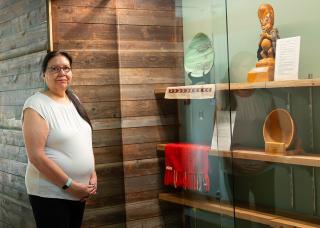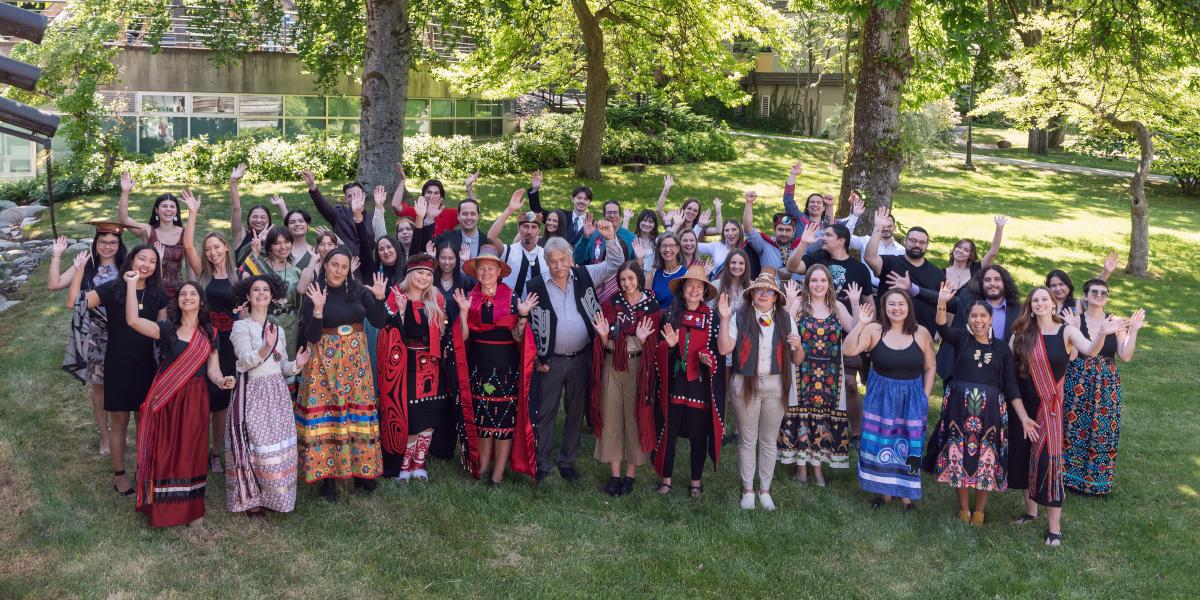First Nations Longhouse at UBC: Celebrating 30 years


This year is the 30th anniversary of the First Nations Longhouse, which has served as a “home away from home” for Indigenous students since 1993.
To recognize this important milestone, we spoke with the First Nations House of Learning’s Director, Dr. Margaret Moss, about how the Longhouse supports the Indigenous community at UBC, and what she envisions for its future.
The Longhouse is a safe and culturally supportive space for Indigenous students as they navigate their educational journey at UBC. It was created as a “home away from home” for Indigenous students, and that’s truly what it is.
It’s also a hub for the entire Indigenous community at UBC – a space where they can connect with others that understand their contexts as well as share their cultures with each other and with non-Indigenous folks on campus.
The Longhouse is the building, and the First Nations House of Learning (FNHL) is the unit that administers the programming that takes place within the building.
Various events and gatherings are held in Sty-Wet-Tan Great Hall, including yearly Indigenous grad ceremonies. Plus, there’s a suite of programming for students at the Longhouse. This includes the Indigenous Students Collegium, which now has the Musqueam name šxʷta:təχʷəm. It’s like a day dorm where students can cook, study, socialize, or even sleep if they want to. Other Longhouse spaces are used for tutoring, wellness workshops, and counselling services for Indigenous students.
We also host free weekly lunches for Indigenous students, and they are routinely attended by more than 100 students. And we’ve recently started holding lunches for Indigenous faculty and staff as well. These too have been well-attended and usually include an Indigenous faculty or staff speaker.
Pre-pandemic, we offered much requested smudging outside of the Longhouse. While smudging is not a Musqueam tradition, we use the Longhouse and its grounds as a space where Indigenous people of all cultures can engage in activities that support their spiritual and emotional wellness and safety.
The Longhouse hosts academic gatherings, which often include the dissemination of research and best teaching practices. Select classes are also taught out of the Great Hall.
For instance, during the pandemic, I taught classes for my course Promoting the Health of Indigenous People with the UBC School of Nursing there. And with the Longhouse open again, I was recently able to teach my first and last classes there. That way I could introduce students to the teachings of the house posts, and they could use the kitchen to make teas and melt bear grease.
We continue to book space for other Indigenous academic programs, such as the Indigenous Teacher Education Program, as well.
When I first got here, I hosted a conference on missing and murdered Indigenous women and girls at the Longhouse. At the time, the date, which had been set, serendipitously fell one week after the final report of the National Inquiry into Missing and Murdered Indigenous Women and Girls came out. As a result, the chief commissioner, Marion Buller, was scheduled as the keynote and the conference contributed to that important conversation.
And of course, planning work for UBC’s Indigenous Strategic Plan work was done out of the Longhouse. It was an ideal space for that work, including hosting various campus engagement sessions.
We were finally able to complete the Longhouse as it was originally designed. We added a large multi-purpose room, additional office space, and a sound-proof room where students can talk confidentially with counsellors.
We also repaired the waterfall feature that was an important part of the original design. The Elders back then said: “you need to have all of it. The water, the trees, all the elements need to be there.”
And I’m really proud of the Indigenous Students Collegium, which was piloted in 2019 and now, after renovations, is a permanent space at the Longhouse that’s on par with other Collegium sites on campus.
I’m taking first steps toward a small scholarship program for Indigenous students – the details of which will be announced in due course. I anticipate that the Longhouse will continue to host student and campus events, bringing together partners from across campus and the broader community. And as part of supporting student wellness, I hope that First Nations House of Learning staff will continue with plans to institute an Elders/Knowledge Keepers program at the Longhouse, that way if a student says, “I’m homesick and I want to talk to a Grandma,” there will be someone on hand for this kind of cultural support.
Finally, I hope that, with FNHL, Indigenous-centred units across campus, such as Xwi7xwa Library, the Indian Residential School History and Dialogue Centre, the Indigenous Teacher Education Program, Indigenous Research Strategic Inititative and others, will continue to strengthen relations in service of building a strong Indigenous community on campus, inclusive of students, faculty, staff, and allies. After all, the fabric of every community is only as strong as its weave, which is another way of saying the strength of their connections.

Interviewed by Julie Gordon
More information:
First Nations Longhouse at UBC celebrates 30 years as a ‘home away from home’ for Indigenous students
Find the latest news, updates, events, and useful dates from across UBC, curated for faculty and staff by Internal Communications.
Access a library of resources from multiple UBC websites, all in one place.